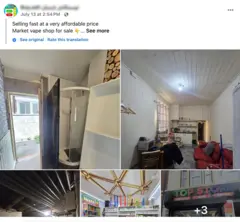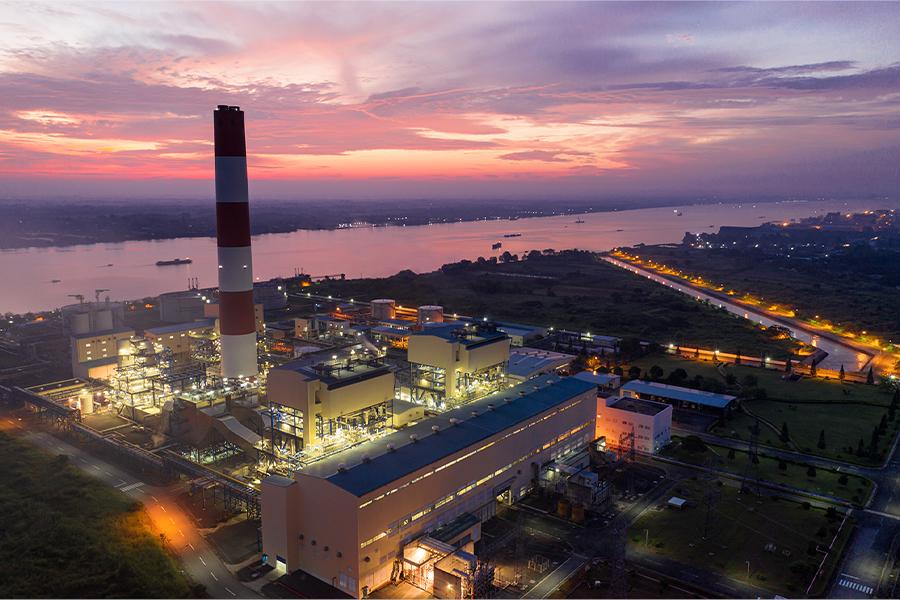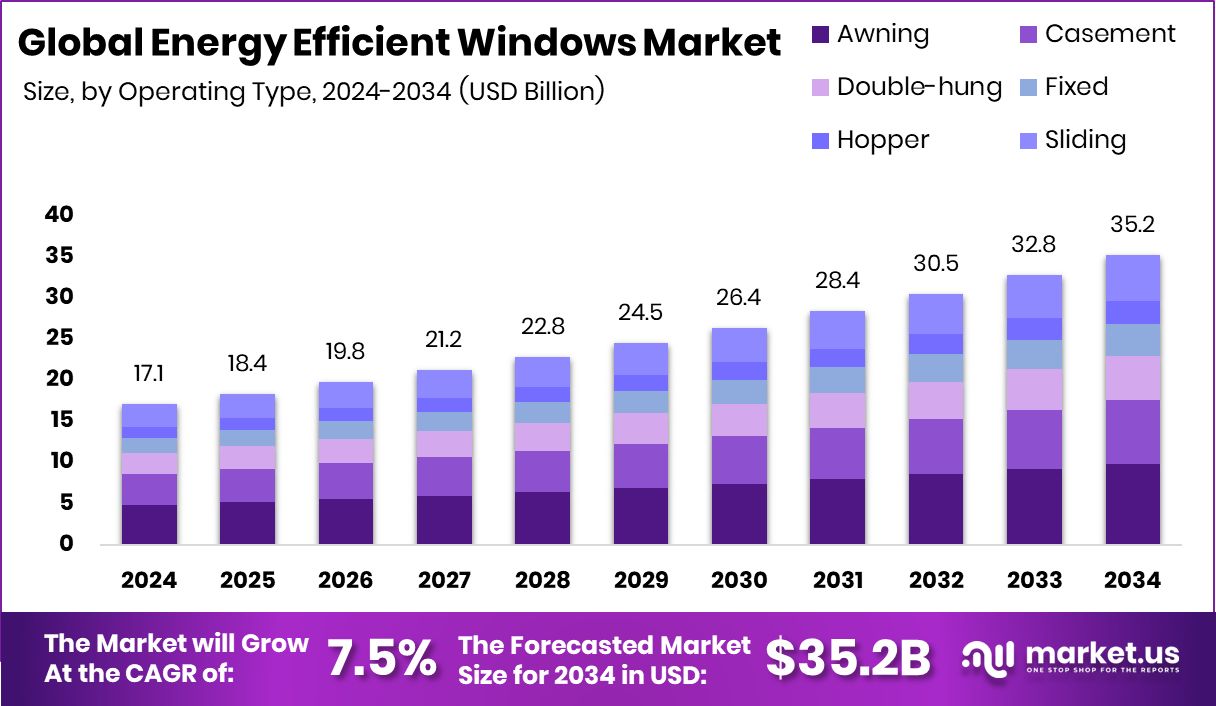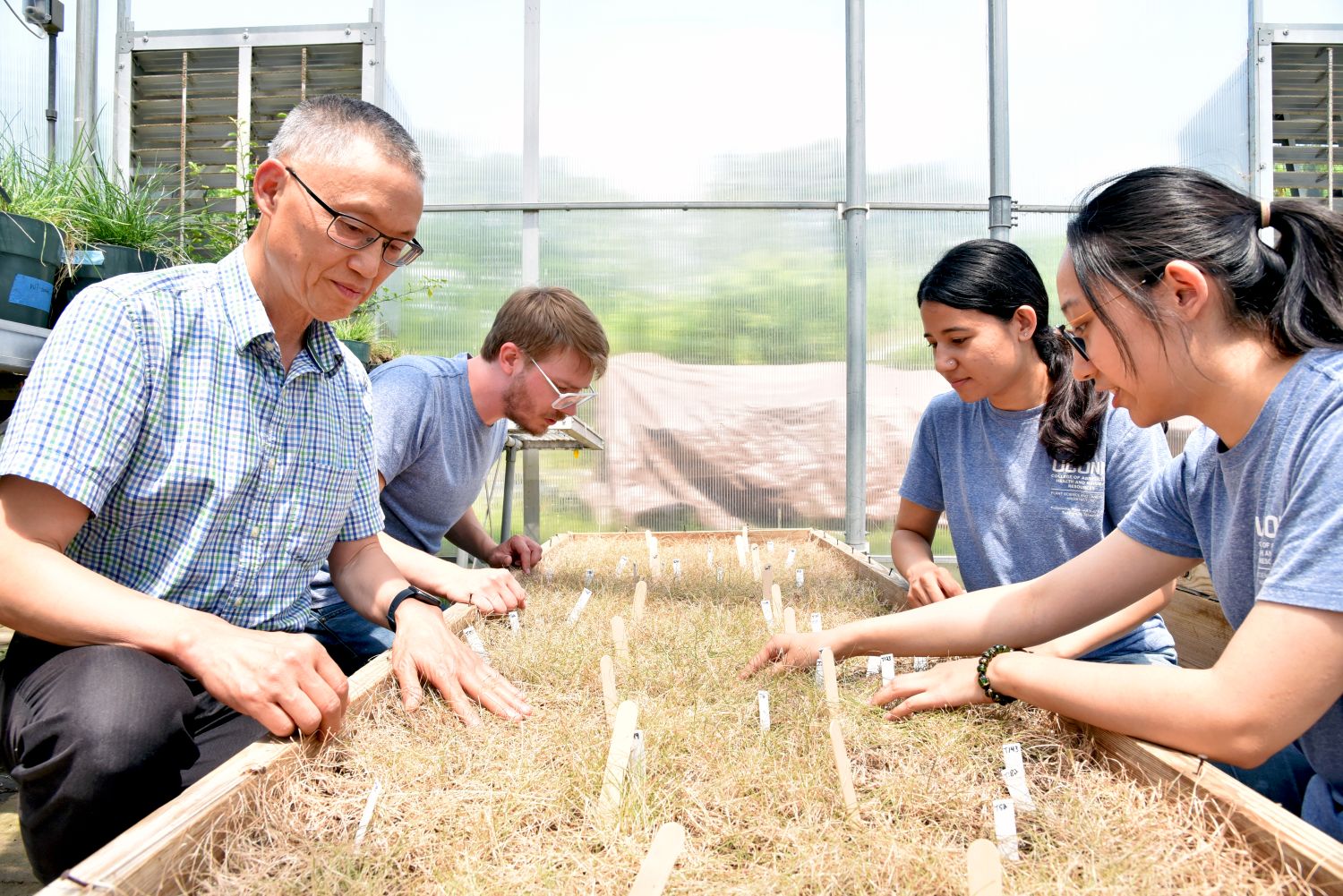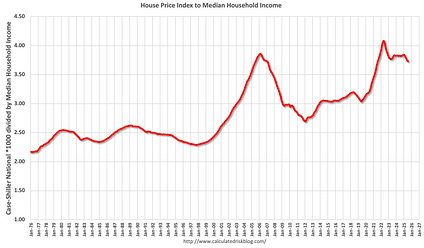China’s Urban Renaissance: Unlocking Long-Term Growth in Sustainable Infrastructure and Real Estate – AInvest

Report on China’s Urban Development Strategy and Alignment with Sustainable Development Goals (SDGs)
Introduction: A Framework for Sustainable Urban Transformation
China’s contemporary urban development policies, under the leadership of Xi Jinping, represent a strategic pivot towards sustainability, innovation, and equity. This transformation is fundamentally aligned with the United Nations’ Sustainable Development Goals (SDGs), particularly those concerning climate action, infrastructure, and inequality. The national “dual carbon” targets—achieving peak emissions by 2030 and carbon neutrality by 2060—serve as the primary driver for redefining urban growth. This report analyzes the key pillars of this strategy, highlighting their direct contributions to the SDG agenda and outlining the resulting opportunities for targeted investment and international partnership.
The Green Building Revolution: Advancing SDG 11, SDG 12, and SDG 13
Policy and Sectoral Focus
China’s commitment to sustainable construction is a direct response to SDG 13 (Climate Action) and SDG 11 (Sustainable Cities and Communities). The expansion of the 2024 Green Industry Catalogue signals a concerted effort to promote low-carbon technologies and materials, contributing to SDG 12 (Responsible Consumption and Production). Key policy mechanisms include:
- Transition Finance: Preferential loans are being directed towards high-emission industries like steel and construction to facilitate their shift towards sustainable practices.
- Technology Support: The catalogue prioritizes carbon capture, utilization, and storage (CCUS), energy-efficient building materials, and green logistics.
These initiatives are designed to decarbonize one of the country’s most resource-intensive sectors, creating a market for green innovation.
International Collaboration and Investment Areas
In line with SDG 17 (Partnerships for the Goals), international collaboration is proving crucial. The Sino-Swiss Zero Emission Building (ZEB) Project is a notable example, focused on establishing technical standards for zero-carbon buildings. Investment opportunities are concentrated in:
- Green building materials
- Smart HVAC systems
- Energy-efficient retrofitting services
Smart Cities: Leveraging Technology for SDG 9 and SDG 11
The “New Quality Productive Forces” Strategy
The national strategy promoting “New Quality Productive Forces” (NQPFs) is accelerating the digitization and automation of urban environments, directly supporting SDG 9 (Industry, Innovation and Infrastructure) and enhancing the efficiency of cities as envisioned in SDG 11. Exemplary projects include:
- Lingang New Area (Shanghai): Offers substantial subsidies for intelligent computing projects that integrate AI, IoT, and renewable energy systems, advancing SDG 7 (Affordable and Clean Energy).
- Hangzhou’s “City Brain”: An Alibaba-backed initiative using data analytics for urban management.
- Shenzhen’s Traffic Systems: Employs AI to optimize traffic flow and reduce congestion-related emissions.
These initiatives demonstrate a model for technology-driven urban sustainability, where public-private partnerships are critical for implementation.
Regional Development: Bridging Divides to Achieve SDG 1, SDG 10, and SDG 6
The Rural Comprehensive Revitalization Plan
To address SDG 10 (Reduced Inequalities) and SDG 1 (No Poverty), the Rural Comprehensive Revitalization Plan (2024–2027) aims to close the urban-rural gap. The plan focuses on upgrading essential infrastructure, thereby contributing to SDG 6 (Clean Water and Sanitation) and SDG 7 (Affordable and Clean Energy) in underserved regions. Key areas of opportunity include:
- Smart Farming: Digitizing agriculture to improve yields and market access, supporting SDG 2 (Zero Hunger).
- Renewable Energy Microgrids: Providing clean and reliable power to rural communities.
- Telemedicine: Improving healthcare access through digital platforms.
- Rural E-commerce: Connecting agricultural producers with urban consumer markets.
The Foreign Investment Encouraged Catalogue (2024) further supports this goal by offering incentives for foreign capital in these sectors, particularly in western regions.
Supportive Policies and Financial Mechanisms for SDG Attainment
National and Cross-Border Frameworks
The 14th Five-Year Plan (2021–2025) provides the fiscal foundation for this transformation, allocating significant capital to green and technology-driven sectors. This is reinforced by a sophisticated financial ecosystem designed to channel funds towards SDG-aligned projects.
Key Financial Instruments
- Transition Bonds and Green Insurance: Mobilizing private capital for sustainable projects.
- Tax Exemptions: Incentivizing compliance with green standards.
- Sustainable Finance Taxonomy (Hong Kong): Aligning with global standards to facilitate cross-border capital flows, directly supporting SDG 17.
Navigating Challenges and Strategic Outlook
While geopolitical trade tensions present potential headwinds, China’s strategy includes mitigating factors such as the localization of critical supply chains and a strong focus on domestic innovation. For stakeholders, a long-term, thematic approach is essential for navigating this landscape.
Strategic Focus Areas Aligned with SDGs
- Green Building (SDG 11, 13): Focus on firms specializing in energy-efficient materials and CCUS technology.
- Smart Cities (SDG 9, 11): Prioritize providers of AI/5G infrastructure and data-driven urban management platforms.
- Regional Development (SDG 1, 10): Target infrastructure funds and rural digitization projects in developing regions.
Conclusion: A Blueprint for a Sustainable Future
China’s urban development policies constitute a comprehensive blueprint for achieving a sustainable, inclusive, and technologically advanced future. The strategy’s deep alignment with the Sustainable Development Goals provides a clear roadmap for progress. While subject to short-term economic and geopolitical variables, the structural shift towards green and smart infrastructure represents a defining long-term transformation. Stakeholders aligned with these national and global sustainability priorities are positioned to participate in one of the most ambitious urban development programs in modern history.
Analysis of Sustainable Development Goals in China’s Urban Development
1. Which SDGs are addressed or connected to the issues highlighted in the article?
-
SDG 7: Affordable and Clean Energy
- The article emphasizes China’s focus on renewable energy systems, energy-efficient building materials, smart grids, and solar farms. This directly relates to increasing the share of renewable energy and improving energy efficiency.
-
SDG 9: Industry, Innovation, and Infrastructure
- The text highlights the development of sustainable and resilient infrastructure, such as high-speed rail and 5G networks. It also details the retrofitting of high-emission industries like steel and construction and promotes domestic innovation through the “New Quality Productive Forces” strategy, focusing on AI, IoT, and digitization.
-
SDG 11: Sustainable Cities and Communities
- This is a central theme of the article. It discusses policies for sustainable urbanization, including the “green building revolution,” the development of “smart cities” like Lingang and Hangzhou, and efforts to reduce the environmental impact of cities through zero-carbon buildings. It also addresses urban-rural links through the “Rural Comprehensive Revitalization Plan.”
-
SDG 13: Climate Action
- The article explicitly mentions China’s “dual carbon” goals—peaking emissions by 2030 and achieving carbon neutrality by 2060. These national targets are integrated into urban development policies, the 14th Five-Year Plan, and the promotion of low-carbon technologies like Carbon Capture and Utilization (CCUS).
-
SDG 17: Partnerships for the Goals
- The article points to various partnerships, including international collaboration (the Sino-Swiss Zero Emission Building Project), public-private partnerships (Hangzhou’s “City Brain” initiative), and the mobilization of foreign capital through the “Foreign Investment Encouraged Catalogue” and Hong Kong’s “Sustainable Finance Taxonomy.”
2. What specific targets under those SDGs can be identified based on the article’s content?
-
Target 7.2: Increase substantially the share of renewable energy in the global energy mix.
- This is supported by the article’s mention of investments in “renewable energy systems,” “solar farms,” and “renewable energy microgrids” in rural areas.
-
Target 7.3: Double the global rate of improvement in energy efficiency.
- The focus on “energy-efficient building materials,” “smart HVAC systems,” and “energy-efficient retrofits” directly contributes to this target.
-
Target 9.1: Develop quality, reliable, sustainable and resilient infrastructure.
- The article details investments in “high-speed rail,” “5G infrastructure,” and improved rural infrastructure for “water, energy, waste.”
-
Target 9.4: Upgrade infrastructure and retrofit industries to make them sustainable.
- This is evident in the “Green Industry Catalogue” and “transition finance mechanisms” aimed at helping high-emission sectors like steel and construction shift toward sustainability.
-
Target 11.3: Enhance inclusive and sustainable urbanization and capacity for participatory, integrated and sustainable human settlement planning and management.
- China’s “smart cities” strategy, exemplified by the “City Brain” project and AI-driven traffic management, represents an effort to improve urban management and planning.
-
Target 11.6: Reduce the adverse per capita environmental impact of cities.
- The push for “green building,” “low-emission concrete,” and the development of “zero-carbon buildings” directly addresses the goal of reducing urban environmental footprints.
-
Target 11.a: Support positive economic, social and environmental links between urban, peri-urban and rural areas.
- The “Rural Comprehensive Revitalization Plan” and the “Rural E-commerce Development Program” are specifically designed to bridge the urban-rural divide by improving rural infrastructure and connecting farmers to urban markets.
-
Target 13.2: Integrate climate change measures into national policies, strategies and planning.
- The article states that the “dual carbon” goals are a core part of national policy, embedded in the “14th Five-Year Plan” and driving the shift toward a green economy.
-
Target 17.17: Encourage and promote effective public, public-private and civil society partnerships.
- The article provides examples such as the “Sino-Swiss Zero Emission Building (ZEB) Project” (international partnership) and Hangzhou’s “City Brain” initiative (public-private partnership).
3. Are there any indicators mentioned or implied in the article that can be used to measure progress towards the identified targets?
-
National Climate Targets:
- The specific goals of “peak emissions by 2030” and “carbon neutrality by 2060” serve as high-level, measurable indicators for climate action (SDG 13).
-
Financial Incentives and Investment:
- The availability of “subsidies up to RMB 10 million for intelligent computing projects” in Lingang is a quantifiable indicator of investment in smart city technology (SDG 9, 11).
- The preferential “15% corporate tax” in western regions is an indicator of policy support for regional development (SDG 11).
- The use of “transition bonds, green insurance, and tax exemptions” are indicators of the financial ecosystem supporting sustainability (SDG 9, 17).
-
Policy and Regulatory Frameworks:
- The existence and expansion of the “2024 Green Industry Catalogue,” the “Foreign Investment Encouraged Catalogue,” and the “14th Five-Year Plan” are indicators of integrated national planning (SDG 13).
-
Development of Standards and Projects:
- The development of “technical standards for zero-carbon buildings” through the Sino-Swiss ZEB Project is a concrete indicator of progress in green construction (SDG 11).
- The implementation of specific projects like the “City Brain” in Hangzhou and AI-driven systems in Shenzhen are indicators of smart city deployment (SDG 11).
4. Table of SDGs, Targets, and Indicators
| SDGs | Targets | Indicators Identified in the Article |
|---|---|---|
| SDG 7: Affordable and Clean Energy | 7.2: Increase share of renewable energy 7.3: Improve energy efficiency |
Investment in solar farms and renewable energy microgrids; Development of energy-efficient building materials and smart HVAC systems. |
| SDG 9: Industry, Innovation, and Infrastructure | 9.1: Develop sustainable and resilient infrastructure 9.4: Upgrade industries to make them sustainable |
Investment in high-speed rail and 5G infrastructure; Use of transition finance for steel and construction sectors; Subsidies for intelligent computing projects (up to RMB 10 million). |
| SDG 11: Sustainable Cities and Communities | 11.3: Enhance sustainable urbanization 11.6: Reduce the environmental impact of cities 11.a: Strengthen urban-rural links |
Implementation of “City Brain” projects; Development of technical standards for zero-carbon buildings; Implementation of the Rural Comprehensive Revitalization Plan. |
| SDG 13: Climate Action | 13.2: Integrate climate measures into national policies | National “dual carbon” goals (peak emissions by 2030, carbon neutrality by 2060); Integration of climate goals into the 14th Five-Year Plan; Investment in CCUS technology. |
| SDG 17: Partnerships for the Goals | 17.17: Encourage effective public-private partnerships | Establishment of international collaborations (Sino-Swiss ZEB Project); Use of Public-Private Partnerships (Hangzhou’s City Brain); Mobilization of capital via Foreign Investment Catalogues. |
Source: ainvest.com

What is Your Reaction?
 Like
0
Like
0
 Dislike
0
Dislike
0
 Love
0
Love
0
 Funny
0
Funny
0
 Angry
0
Angry
0
 Sad
0
Sad
0
 Wow
0
Wow
0


















